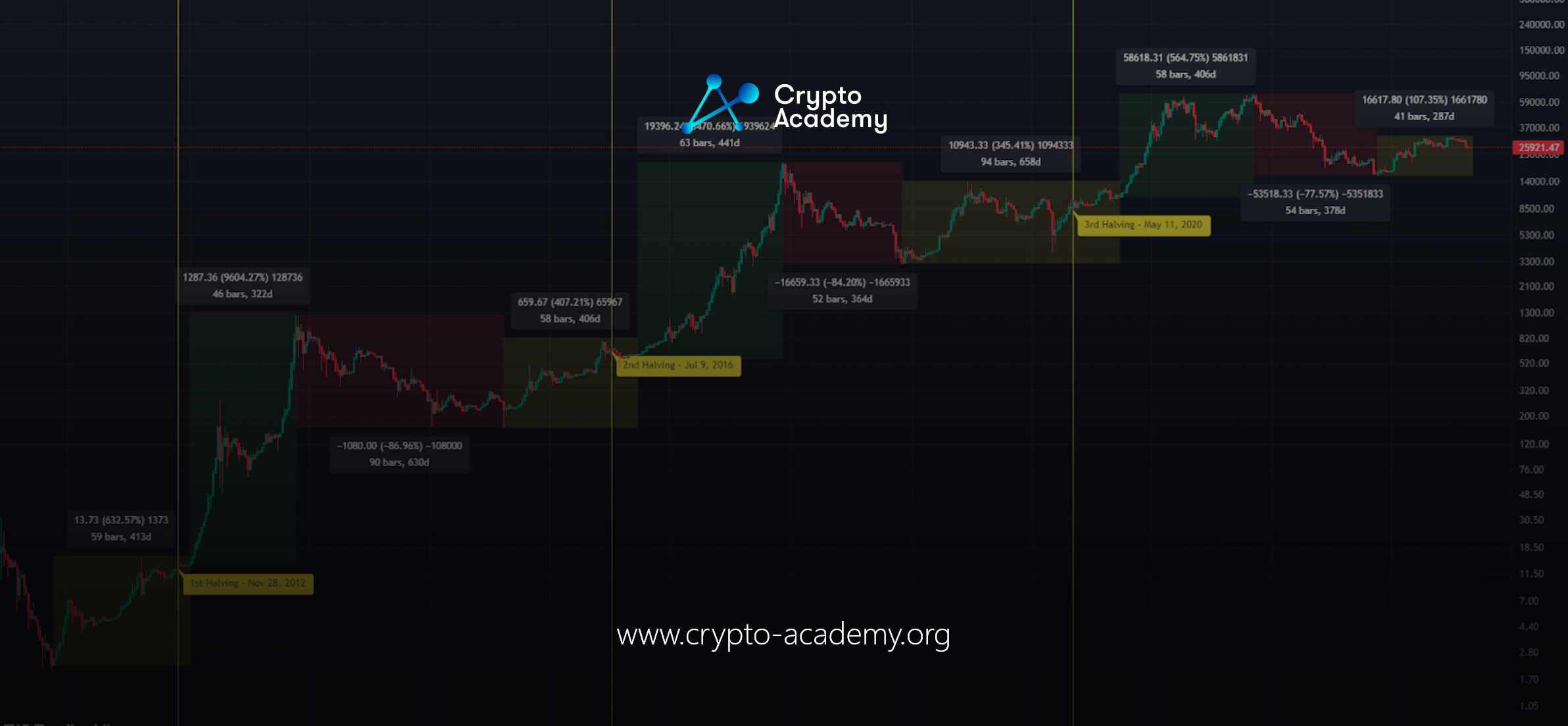The 2024 Bitcoin halving is distinguished by unprecedented user growth, institutional investment, and significant pre-halving price surges.
Bitcoin’s 2024 halving marks the fourth occurrence of this event, but it stands out from its predecessors in several key ways. Historically, Bitcoin halvings lead to a price increase. However, it remains to be seen if this trend will continue. One thing is certain: the dynamics around this halving are uniquely different, influenced by a significant rise in crypto users and substantial institutional investments.
User Growth and Institutional Investment
Since the last halving in May 2020, the global crypto user base has seen a dramatic increase. Estimates suggest that there were about 100 million crypto users worldwide in 2020. Fast forward to the end of 2023, and this number has skyrocketed to approximately 580 million, showing a 400% increase. Despite Bitcoin’s dominance in the market, its user base is only a fraction of the entire crypto ecosystem, with about 219 million people owning Bitcoin as of early 2024. This represents a 208% increase from four years earlier.
The significant growth in user numbers comes alongside the first-ever launch of spot Bitcoin ETFs in the United States. Starting in January 2024, these ETFs allowed institutional investors to gain direct exposure to Bitcoin, which played a critical role in the pre-halving price surge. As a result, all ten spot Bitcoin ETFs expanded their holdings significantly, underscoring a growing institutional interest not seen in previous halving cycles.
Pre-Halving Price Rally and Miners’ Improved Position
The pre-halving period of 2024 witnessed unprecedented market behavior with Bitcoin reaching new all-time highs. Unlike previous cycles where price peaks occurred post-halving, this time Bitcoin hit a record high of $73,600 in March 2024, just before the halving. This pre-halving rally highlights a shift in market dynamics and investor sentiment.
This rally has also positively impacted Bitcoin miners. Miners have gained better control over their operational costs, thanks to the increased revenue from the higher pre-halving price. The overall financial health of miners has improved as they managed lower levels of debt and enhanced control over significant expenses like electricity. Moreover, Bitcoin mining practices have evolved with a notable increase in energy consumption, which reached 99 Terawatt hours by mid-April 2024. However, it’s worth noting that a larger portion of this energy now comes from renewable sources, with renewables powering 54.5% of all Bitcoin mining as of January 2024.
Enhanced Network Security and Decentralization
Another significant difference in the 2024 halving is the enhanced security and decentralization of the Bitcoin network. The geographical distribution of mining has changed dramatically since 2020, when a majority of Bitcoin mining was concentrated in Mainland China. As of early 2024, the United States leads with 40% of the global Bitcoin mining hash rate, followed by China and Russia. This shift not only reflects a broader decentralization but also contributes to the robustness of the network.
The Bitcoin blockchain’s security has strengthened considerably, with the network’s hash rate quintupling since the last halving. This increase means that any potential threat would require five times more computing power to breach the network, making Bitcoin more secure against attacks.

